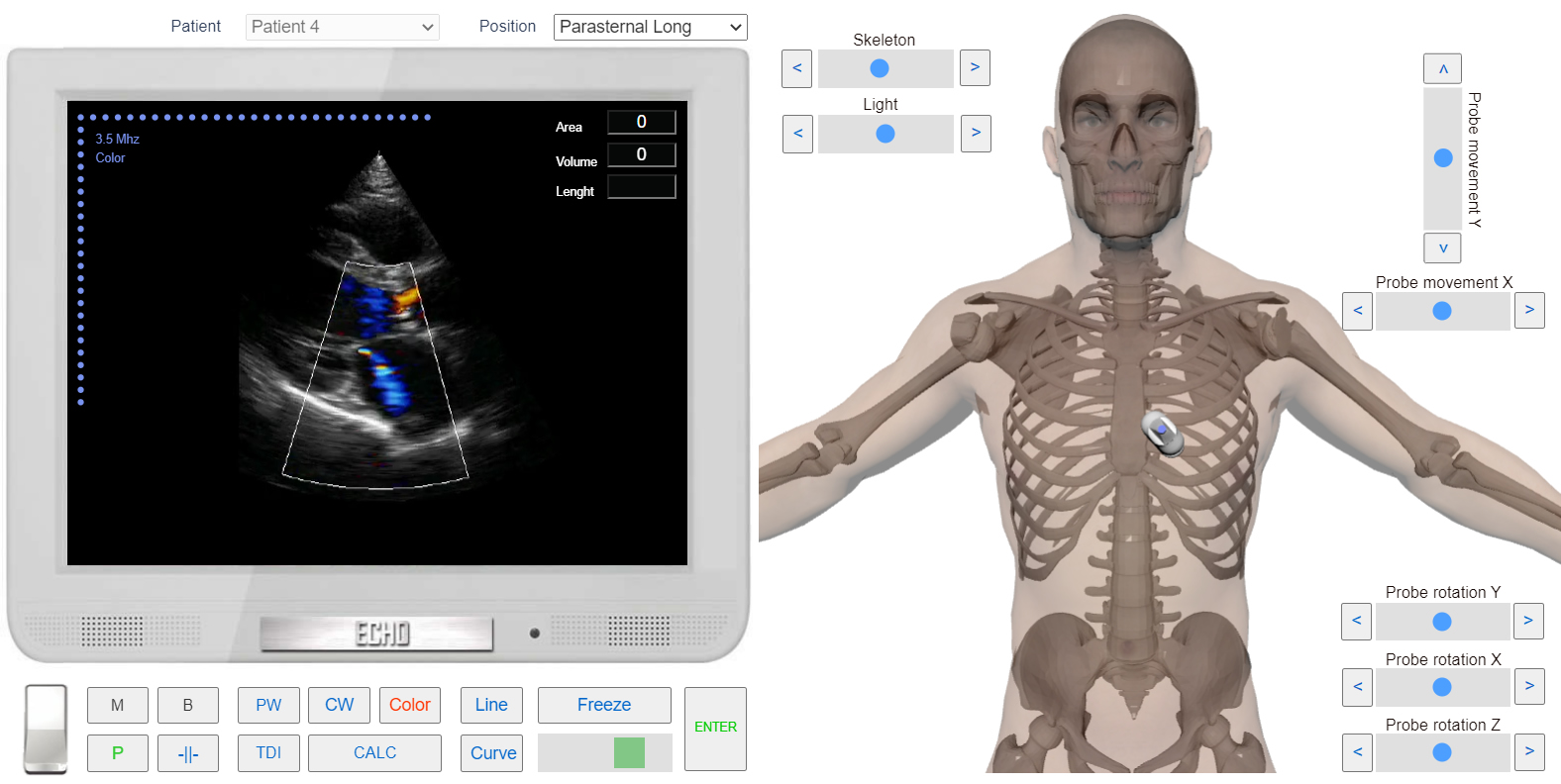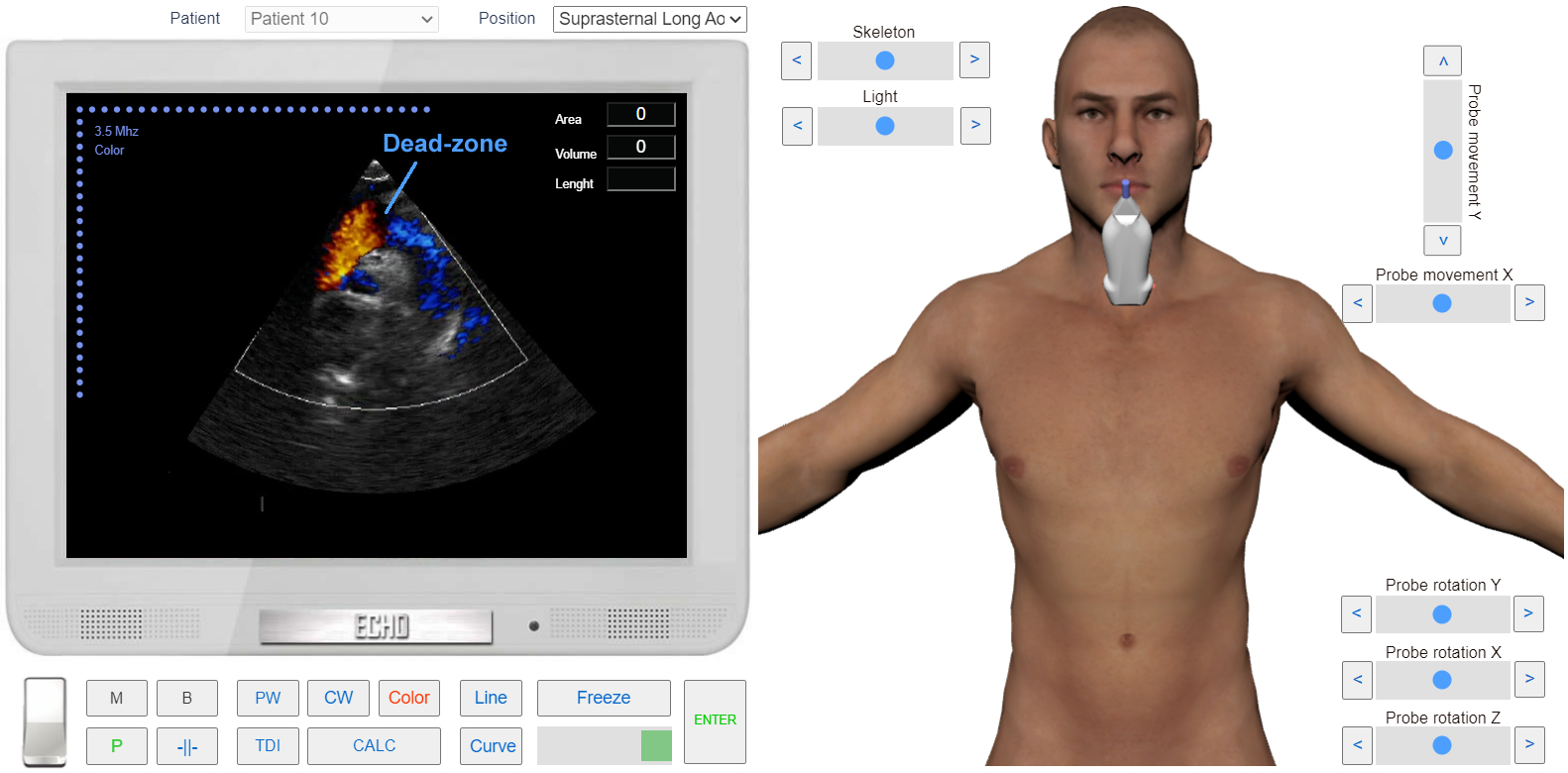color DOPPLER
Echocardiography Textbook
Color Doppler Information:
- Flow direction.
- Flow velocity.
- Flow character (laminar, turbulent)

BART System. Blue - Away, Red - Towards
Flow direction
The flow directed towards the transducer is coded in red, from the transducer - in blue. Such a system is called the BART system - Blue Away, Red Towards
Flow velocity
Brighter blues and reds correspond to faster speeds.
Flow character (laminar, turbulent):
The laminar flow appears on the display as a homogeneous image of one color. The turbulent flow has a mosaic pattern and contains different colors.
When examining with color Doppler, two-dimensional Echocardiography gives a two-dimensional image and a Color Doppler superimposes the flow color-coded image on it.
Each image consists of 250 - 500 Sample Volumes, oriented in a sector of the ultrasonic beam.

Parasternal Long Axis View. Color Doppler. Simulation by Echocardiography Online Simulator www.MyEchocardiography.com
In the Color Doppler mode, it is important to determine the angle between the flow and the ultrasound beam. If this angle is 90 degrees, an echo-negative space is fixed on the display - the so-called "Dead zone".

Suprasternal approuch, Long Axis of Aorta. Color Doppler. So-called "Dead zone". Simulation by Echocardiography Online Simulator www.MyEchocardiography.com
Nyquist limit
The maximum speed that can be learned in PW mode is called the Nyquist limit. If velocity is higher than this limit spectrum will be distorted. The same happens in color Doppler mode, if the flow rate exceeds the Nyquist limit, a distortion of the spectrum is observed (colors appear that indicate the opposite direction of flow).
Nyquist limit = PRF/2
PRF - Pulse repetition frequency
Color Doppler Examinations
- Transmitral diastolic flow Color Doppler
- Trans-tricuspid flow Color doppler
- Left Ventricular outflow Tract (LVOT) Color Doppler
- Aortic Flow Color Doppler
- Color Doppler of the flow in the Right Ventricular Outflow Tract (RVOT) and Pulmonary Artery
- Color Doppler of the flow in Hepatic Veins and Inferior Vena Cava
How to Simulate Color Doppler Mode?